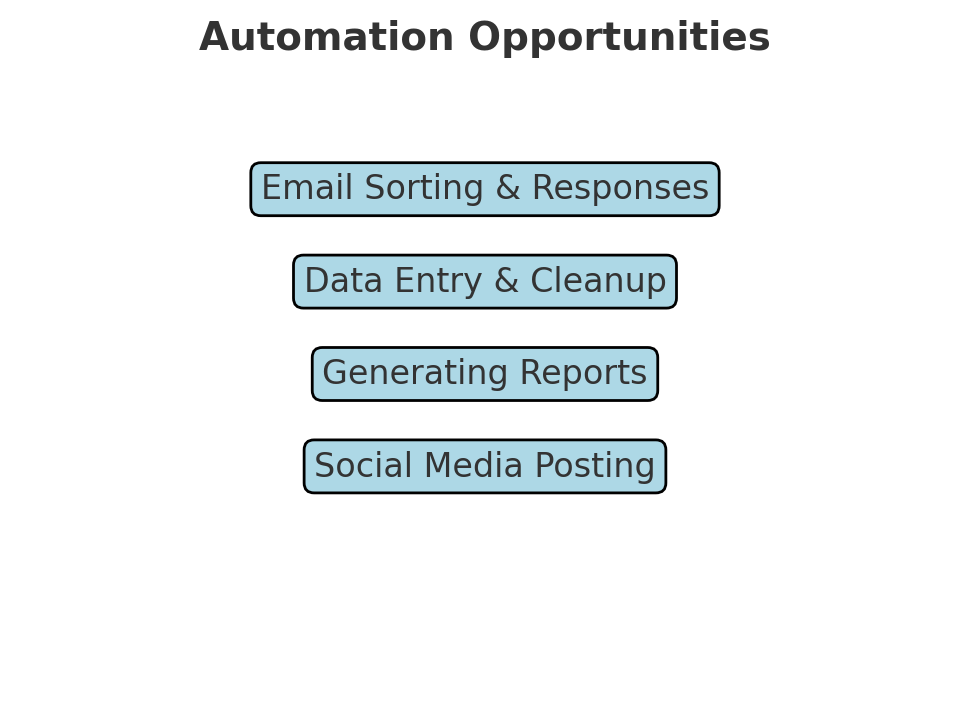Finding What to Automate
AI-driven automation is powerful, but not every task should be automated. The art lies in identifying repetitive, rule-based, and time-consuming tasks that bring the highest return when automated. By knowing what to automate—and what not to—you ensure efficiency gains without compromising creativity or quality.
What Makes a Task Automatable?
- Repetitive: The task occurs often, with little variation (e.g., data entry).
- Rule-based: Clear inputs and outputs exist (e.g., invoice processing).
- Time-consuming: The task drains hours that could be better used for strategic work.
- Low-value but necessary: The task must be done, but adds little creative or strategic input (e.g., sorting emails).
Tasks that require human empathy, critical judgment, or high-level creativity (like conflict negotiation or strategic planning) are not good candidates for automation.
Examples of High-Potential Automation:
| Task | Automation Example | Benefit |
|---|---|---|
| Email Sorting | AI classifies incoming mail by topic and urgency | Frees time for important communication |
| Data Cleanup | AI detects duplicates, formats dates, standardizes text | Improves data quality with less manual work |
| Report Generation | AI turns raw data into dashboards and summaries | Instant access to insights |
| Social Media Posting | Automated scheduling + AI-generated captions | Consistent brand presence |
How to Spot Automation Opportunities in Your Work:
- List your weekly tasks and their approximate time costs.
- Circle the ones that feel repetitive or boring.
- Check if they follow a predictable pattern or rules.
- Estimate the potential time savings if automated.
- Prioritize tasks where automation offers the biggest return on investment.
Key Tip: Automate only when it reduces time without reducing value. Don’t over-automate creative or judgment-heavy work.
Case Study:
A marketing team saved 15 hours weekly by automating campaign reporting. Instead of manually compiling metrics, AI pulled data, cleaned it, and created client-ready visuals. The result: more time spent crafting strategy and less on spreadsheets.
Risks of Over-Automation:
- Loss of human touch (e.g., robotic customer replies)
- Hidden errors scaling up (e.g., bad data propagating through automated reports)
- Employee resistance if they feel replaced, not supported
Remember: automation is about augmentation, not replacement. The goal is to empower humans, not sideline them.
